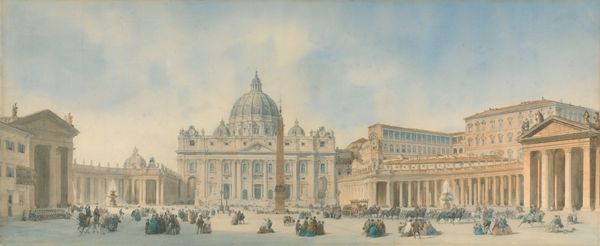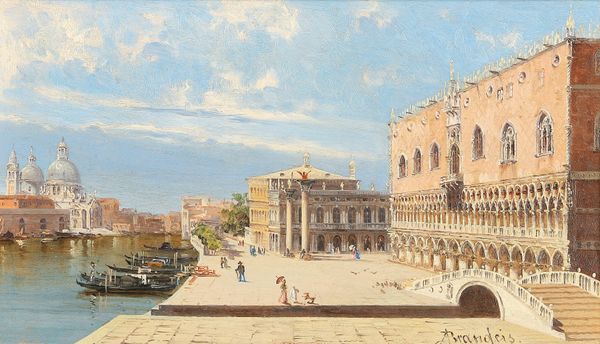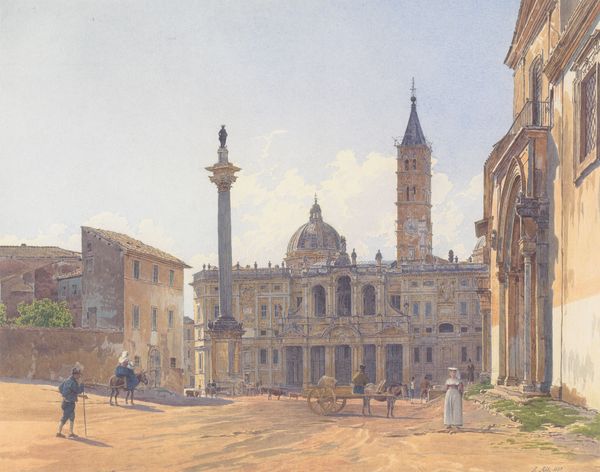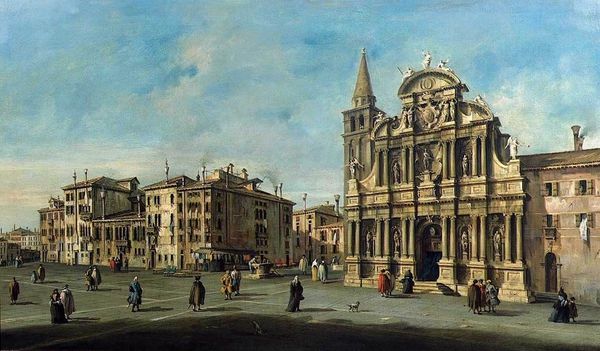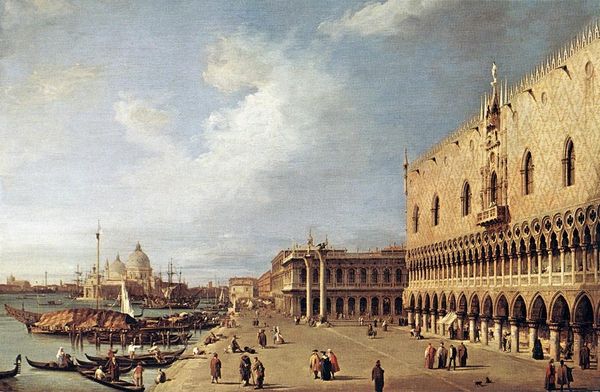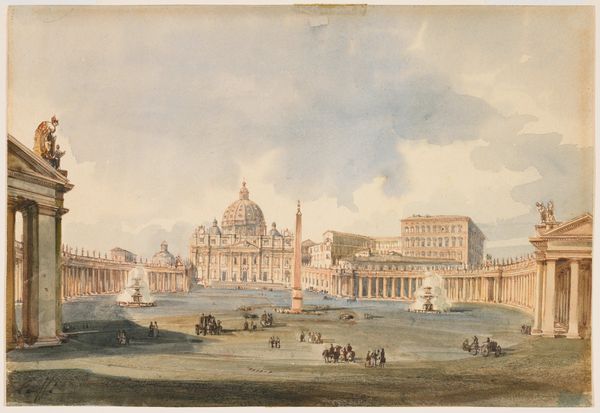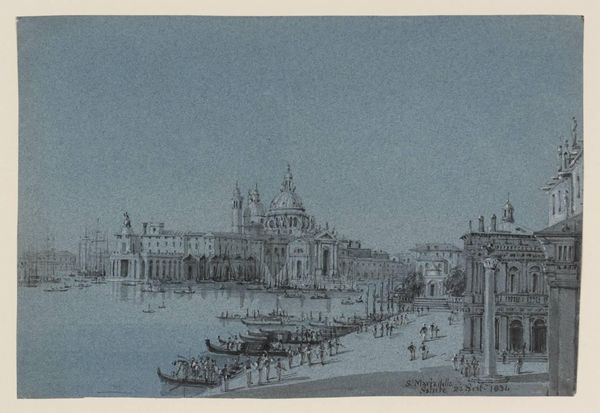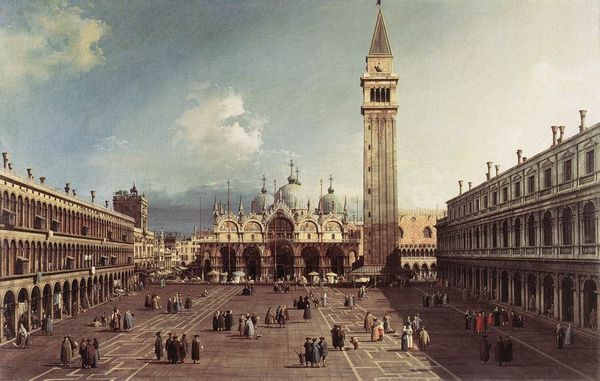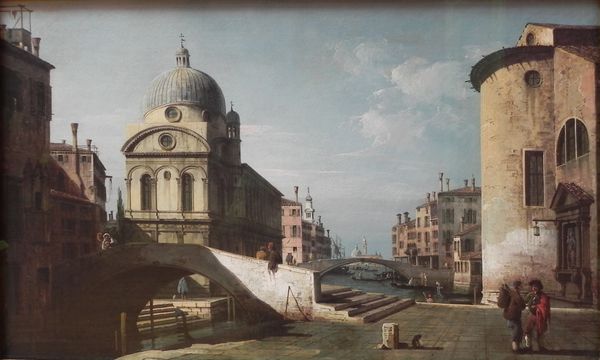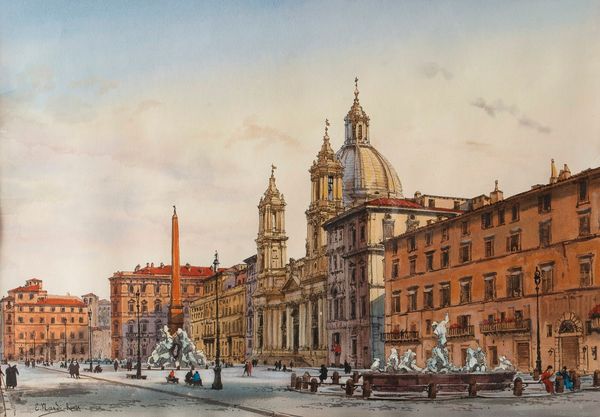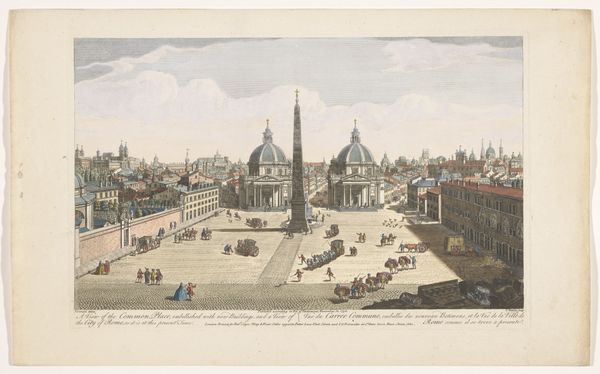
Copyright: Public Domain: Artvee
Editor: This is Ippolito Caffi’s "The Benediction of Pius IX in St. Peter’s Square, Rome," an oil painting from 1857. I'm struck by the sheer volume of people gathered. What do you make of this depiction? Curator: I see a careful orchestration of power and visibility. Caffi paints a Rome grappling with its identity. Pius IX, initially seen as a liberal, became increasingly reactionary, particularly after the Roman Republic of 1849. This image, created almost a decade later, reads to me as an attempt to reassert papal authority amidst a rising tide of Italian nationalism and calls for unification. How does the composition strike you? Editor: It's quite structured. The architecture is so dominant and imposing. It feels almost like a stage set for the Pope's appearance. Curator: Precisely! Consider the power dynamics. The gathered crowds are dwarfed by the architecture. Caffi's meticulous detail in rendering St. Peter's Basilica underscores the Church’s enduring influence, but the multitude of people hints at something else: social movements. How do we interpret their presence and participation within an evolving social and political climate? This square becomes an intersection – where religion, politics, and everyday life meet, or perhaps, collide. Editor: So, it’s not just a picture of a religious ceremony, but a snapshot of the political landscape? Curator: Indeed! It captures a specific moment where religious spectacle intertwines with the political desires and anxieties of the Italian people. These weren't passive bystanders. By capturing the event this way, it compels us to contemplate its complex narratives. Editor: I see it differently now! It’s more than just a cityscape; it's about the struggle for power and self-determination. Curator: Exactly! Analyzing paintings like these is understanding art as part of our cultural identity and dialogue.
Comments
No comments
Be the first to comment and join the conversation on the ultimate creative platform.

